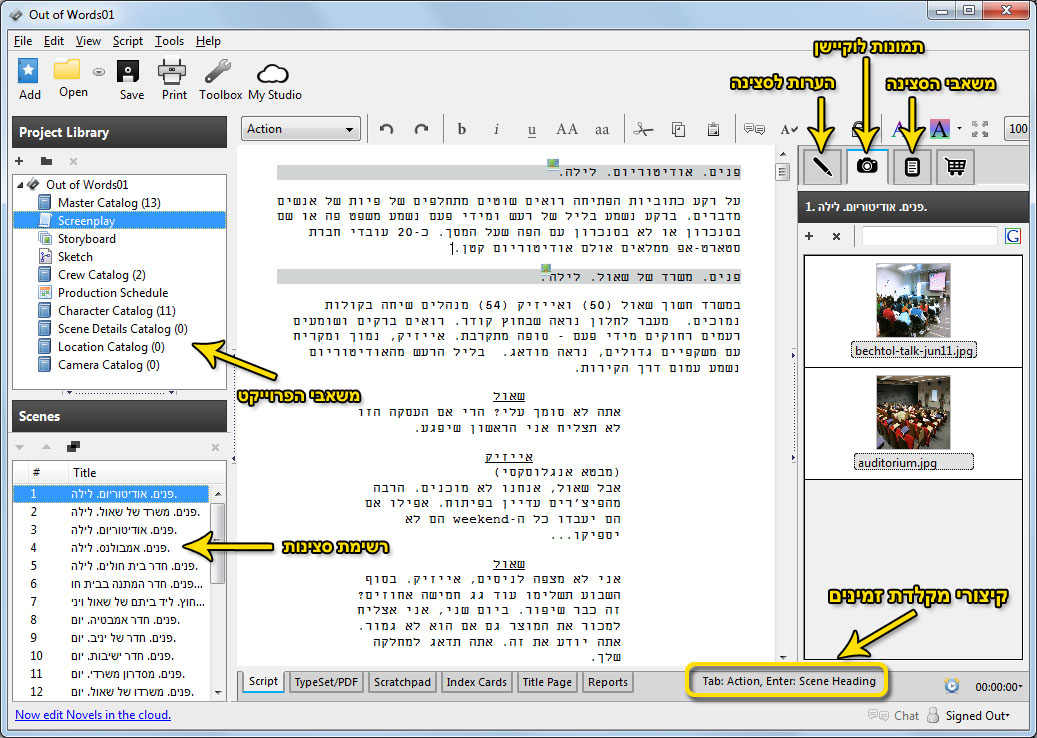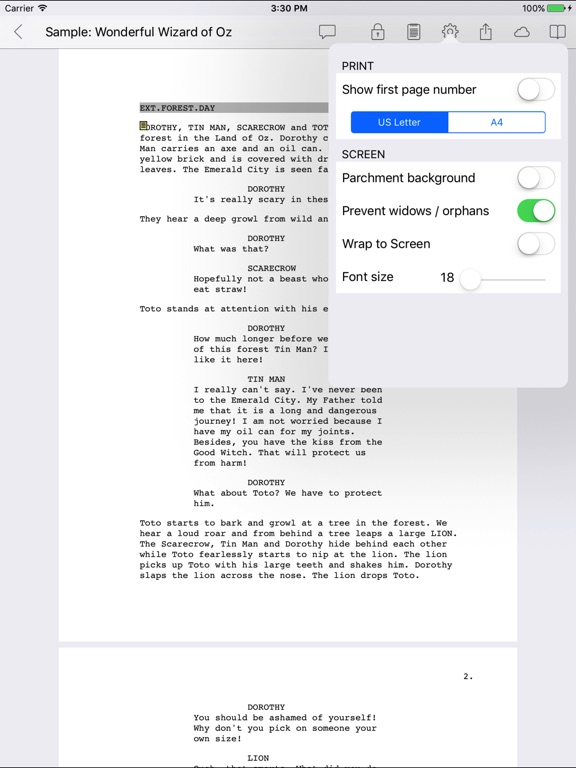

#Celtx script tuturial how to
you do not need to be a trained artist or know how to draw at all to make an incredible storyboard. Now the work of storyboarding is to translate your script words back into an image. You did the hard job of translating your imagined story into words. A good best practice for three details to include under your storyboard frame are a short action description, dialogue, and any visual effects. Storyboards are visual, first and foremost, but these drawings are accompanied by details on the direction of the camera and note any dialogue being spoken underneath. Like a comic, storyboards show separate panels, or tiles, to bring your script to life visually. At a glance, storyboards resemble comic strips because they show dozens of frames, depicting action which is frozen into static images. Based on your script, these sketches constitute the visual chronology of your film. Storyboards are visual aids that show what your film would look like frame by frame.
#Celtx script tuturial pdf
You can distribute that document as a PDF to anyone on your crew with the distribute button.Storyboards are the stepping stones between a finished script and rolling cameras to shoot the action. Celtx will take all the shots you've added to the scene scheduled on that shoot day and organize them into one document. Here you can generate a shot list for your scheduled shoot days. You can also print it by going to File and Print/Download PDF:Ĭlicking the Download button will generate a PDF of the report.Īnother option, if you want shot lists for each shoot day of your production, head to the report section of your Schedule:
#Celtx script tuturial full
If you'd like to get a full list of shots for your entire script, you can find the Shot List Report under the View menu: Fill in the other details and hit "TAG".Īfter you've created all your shots for a scene, you can reorder them by clicking and dragging them in the list:

And if any dialogue was included the cast will be automatically added to Notes as well. The description will be your highlighted test. This will open the shot creation menu again, but some information from your script will be automatically included this time: Highlight a section of the text that will need a specific shot: The other way to add a shot is by tagging your script's text. You can click on it to edit the details if something changes.

You can click on the Equipment under the Shot details to access more information, like Equipment, AOV, Focal Length and Camera: You can describe your Shot, specify the Size, Frame, Extra Angles, and type of Movement the Setup field is freeform to add more details as you need. First, you can use the add button:Ĭeltx will automatically number your shot in order of creation, but you can reorder them later if need be. There are two ways to add shots to your scenes. Let's learn how.Ĭlick on "Shot List" from the right menu of your script: You can also access the Shot List from the main project window. These can then be compiled, into daily shot lists for your director and camera team to use on set. The Shot List feature allows you to quickly annotate your script with camera shots.


 0 kommentar(er)
0 kommentar(er)
